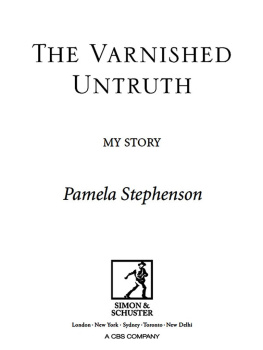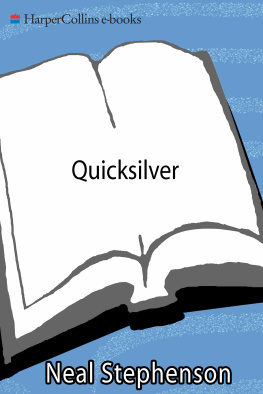The Secession Movement
The secession movement had three distinct stages. The first, beginning with the news that Lincoln was elected, closed with the news, sent broadcast over the South from Charleston, that Federal troops had taken possession of Fort Sumter on the night of the 26th of December. During this period the likelihood of secession was the topic of discussion in the lower South. What to do in case the lower South seceded was the question which perplexed the upper South. In this period no State north of South Carolina contemplated taking the initiative. In the Southeastern and Gulf States immediate action of some sort was expected. Whether it would be secession or some other new course was not certain on the day of Lincoln's election.
Various States earlier in the year had provided for conventions of their people in the event of a Republican victory. The first to assemble was the convention of South Carolina, which organized at Columbia, on December 17, 1860. Two weeks earlier Congress had met. Northerners and Southerners had at once joined issue on their relation in the Union. The House had appointed its committee of thirty-three to consider the condition of the country. So unpromising indeed from the Southern point of view had been the early discussions of this committee that a conference of Southern members of Congress had sent out their famous address To Our Constituents: "The argument is exhausted. All hope of relief in the Union is extinguished, and we trust the South will not be deceived by appearances or the pretense of new guarantees. In our judgment the Republicans are resolute in the purpose to grant nothing that will or ought to satisfy the South. We are satisfied the honor, safety, and independence of the Southern people require the organization of a Southern Confederacya result to be obtained only by separate state secession." Among the signers of this address were the two statesmen who had in native talent no superiors at WashingtonJudah P. Benjamin of Louisiana and Jefferson Davis of Mississippi.
The appeal To Our Constituents was not the only assurance of support tendered to the convention of South Carolina. To represent them at this convention the governors of Alabama and Mississippi had appointed delegates. Mr. Hooker of Mississippi and Mr. Elmore of Alabama made addresses before the convention on the night of the 17th of December. Both reiterated views which during two days of lobbying they had disseminated in Columbia "on all proper occasions." Their argument, summed up in Elmore's report to Governor Moore of Alabama, was "that the only course to unite the Southern States in any plan of coperation which could promise safety was for South Carolina to take the lead and secede at once without delay or hesitation that the only effective plan of coperation must ensue after one State had seceded and presented the issue when the plain question would be presented to the other Southern States whether they would stand by the seceding State engaged in a common cause or abandon her to the fate of coercion by the arms of the Government of the United States."
Ten years before, in the unsuccessful secession movement of 1850 and 1851, Andrew Pickens Butler, perhaps the ablest South Carolinian then living, strove to arrest the movement by exactly the opposite argument. Though desiring secession, he threw all his weight against it because the rest of the South was averse. He charged his opponents, whose leader was Robert Barnwell Rhett, with aiming to place the other Southern States "in such circumstances that, having a common destiny, they would be compelled to be involved in a common sacrifice." He protested that "to force a sovereign State to take a position against its consent is to make of it a reluctant associate. Both interest and honor must require the Southern States to take council together."
That acute thinker was now in his grave. The bold enthusiast whom he defeated in 1851 had now no opponent that was his match. No great personality resisted the fiery advocates from Alabama and Mississippi. Their advice was accepted. On December 20, 1860, the cause that ten years before had failed was successful. The convention, having adjourned from Columbia to Charleston, passed an ordinance of secession.
Meanwhile, in Georgia, at a hundred meetings, the secession issue was being hotly discussed. But there was not yet any certainty which way the scale would turn. An invitation from South Carolina to join in a general Southern convention had been declined by the Governor in November. Governor Brown has left an account ascribing the comparative coolness and deliberation of the hour to the prevailing impression that President Buchanan had pledged himself not to alter the military status at Charleston. In an interview between South Carolina representatives and the President, the Carolinians understood that such a pledge was given. "It was generally understood by the country," says Governor Brown, "that such an agreement had been entered into and that Governor Floyd of Virginia, then Secretary of War, had expressed his determination to resign his position in the Cabinet in case of the refusal of the President to carry out the agreement in good faith. The resignation of Governor Floyd was therefore naturally looked upon, should it occur, as a signal given to the South that reinforcements were to be sent to Charleston and that the coercive policy had been adopted by the Federal Government."
While the "canvass in Georgia for members of the State convention was progressing with much interest on both sides," there came suddenly the news that Anderson had transferred his garrison from Fort Moultrie to the island fortress of Sumter. That same day commissioners from South Carolina, newly arrived at Washington, sought in vain to persuade the President to order Anderson back to Moultrie. The Secretary of War made the subject an issue before the Cabinet. Unable to carry his point, two days later he resigned.
The President had already asked for Floyd's resignation because of financial irregularities, and Floyd was shrewd enough to use Anderson's coup as an excuse for resigning. See Rhodes, History of the United States, vol. II pp. 225, 236 (note).
The Georgia Governor, who had not hitherto been in the front rank of the aggressives, now struck a great blow. Senator Toombs had telegraphed from Washington that Fort Pulaski, guarding the Savannah River, was "in danger." The Governor had reached the same conclusion. He mustered the state militia and seized Fort Pulaski. Early in the morning on January 3, 1861, the fort was occupied by Georgia troops. Shortly afterward, Brown wrote to a commissioner sent by the Governor of Alabama to confer with him: "While many of our most patriotic and intelligent citizens in both States have doubted the propriety of immediate secession, I feel quite confident that recent events have dispelled those doubts from the minds of most men who have, till within the past few days, honestly sustained them." The first stage of the secession movement was at an end; the second had begun.
A belief that Washington had entered upon a policy of aggression swept the lower South. The state conventions assembling about this time passed ordinances of secessionMississippi, January 9; Florida, January 10; Alabama, January 11; Georgia, January 19; Louisiana, January 26; Texas, February 1. But this result was not achieved without considerable opposition. In Georgia the Unionists put up a stout fight. The issue was not upon the right to secedevirtually no one denied the rightbut upon the wisdom of invoking the right. Stephens, gloomy and pessimistic, led the opposition. Toombs came down from Washington to take part with the secessionists. From South Carolina and Alabama, both ceaselessly active for secession, commissioners appeared to lobby at Milledgeville, as commissioners of Alabama and Mississippi had lobbied at Columbia. Besides the out-and-out Unionists, there were those who wanted to temporize, to threaten the North, and to wait for developments. The motion on which these men and the Unionists made their last stand together went against them 164 to 133. Then at last came the square question: Shall we secede? Even on this question, the minority was dangerously large. Though the temporizers came over to the secessionists, and with them came Stephens, there was still a minority of 89 irreconcilables against the majority numbering 208.











